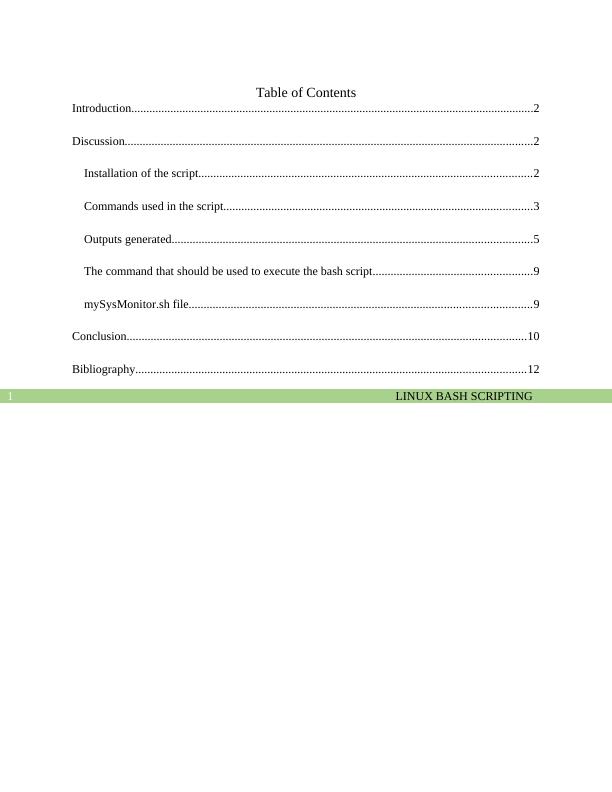Linux Bash Scripting: Commands, Installation, and Outputs
This coursework requires the development of a Linux System Change Logger Script and assesses the understanding, application, and evaluation of computer systems and networks knowledge.
13 Pages2206 Words488 Views
Added on 2022-11-17
About This Document
This report discusses Linux Bash Scripting, its commands, installation process, and outputs generated. It covers the use of ps, echo, lsusb, df, nmcli, and cat commands. The report also provides a detailed explanation of the commands used in the script named as “mySysMonitor.sh” and the output generated.
Linux Bash Scripting: Commands, Installation, and Outputs
This coursework requires the development of a Linux System Change Logger Script and assesses the understanding, application, and evaluation of computer systems and networks knowledge.
Added on 2022-11-17
ShareRelated Documents
End of preview
Want to access all the pages? Upload your documents or become a member.
Linux System Change Logger Script
|12
|2750
|201
Computer Systems and Networks
|33
|1506
|167
Network Administration and Monitoring
|13
|2170
|493
Automated Account Management, Designing and Implementing File Systems in Linux
|11
|647
|305
Network and System Monitoring Report 2022
|16
|2229
|46
Linux File System Management with Scripts
|16
|1536
|421




